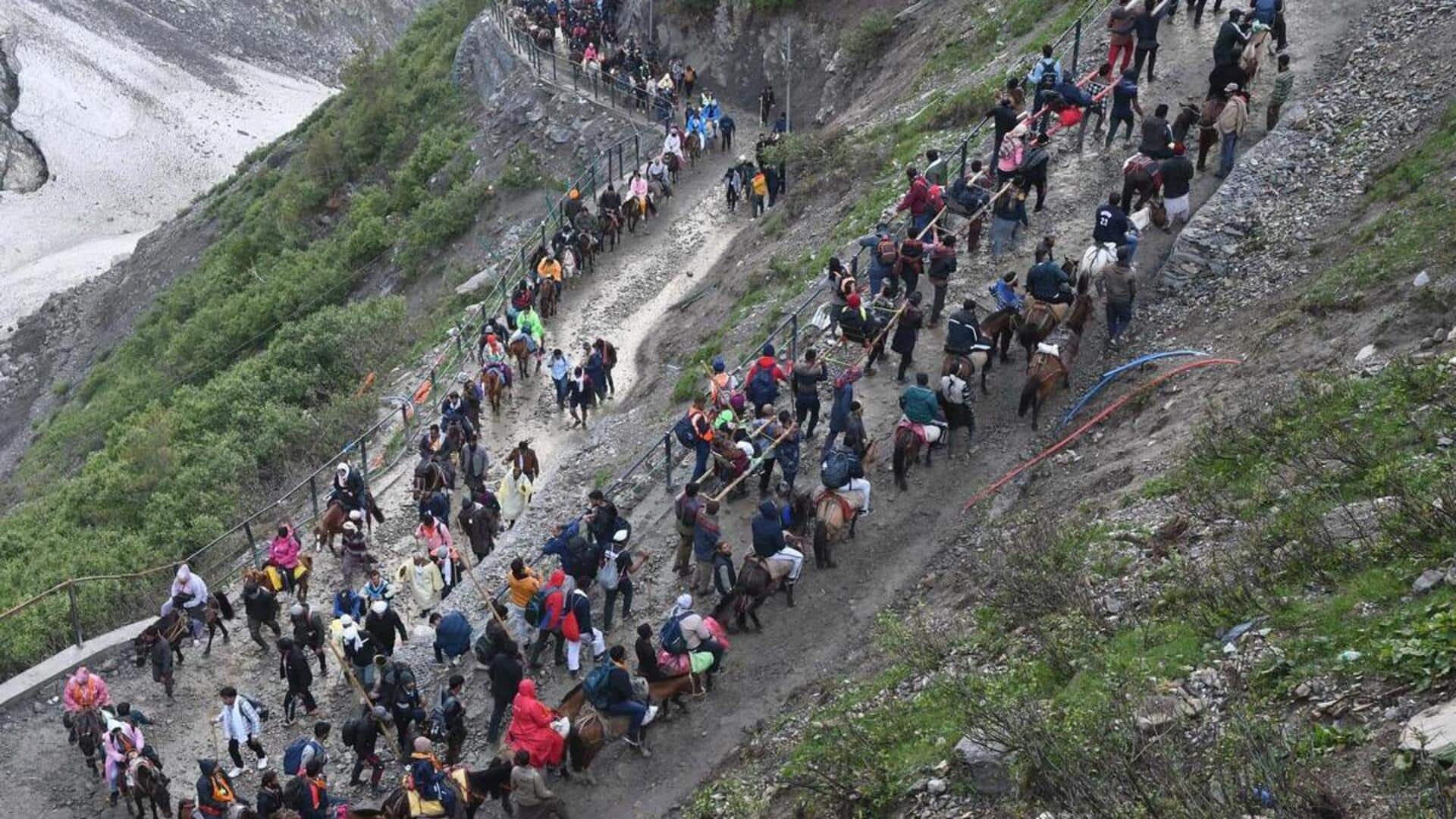
Amarnath Yatra routes declared 'no-fly zones' from July 1
What's the story
The Jammu and Kashmir government on Tuesday declared the routes of the upcoming Amarnath Yatra as "no-fly zones" from July 1 to August 10. The decision was taken on the advice of the Ministry of Home Affairs (MHA) to ensure "foolproof security to pilgrims," an official statement said. The annual pilgrimage will begin on July 3 and end on August 9 this year.
Restrictions
No-fly zone enforced on traditional routes
The no-fly zone will be enforced on the traditional pilgrimage routes of Pahalgam and Baltal. All aerial platforms, including drones, UAVs, and balloons, have been banned along these axes. However, aerial operations for medical evacuations, disaster relief, or security agency surveillance won't be restricted. This measure is aimed at ensuring the safety of thousands of pilgrims undertaking the annual Himalayan journey.
Security measures
No-fly zone to mitigate potential security risks
The no-fly zone has been enforced to prevent any potential security risks from aerial surveillance or drone attacks. This decision comes in the wake of the April 22 Pahalgam terror attack that killed 25 tourists and a local. To further secure the yatra, multi-tier security cordons, RFID pilgrim tracking, and aerial surveillance will be used along with the no-fly zone.
Ongoing preparations
Authorities are implementing robust security protocols
Authorities are working around the clock to implement robust security protocols for the yatra. Review meetings with key security agencies have been held to assess logistical support and threat perception across the Union Territory. The yatra usually lasts for two months. However, this time, it has been curtailed to 38 days amid major security concerns. Over 50,000 personnel from the Central Reserve Police Force and the Jammu and Kashmir Police will be deployed.